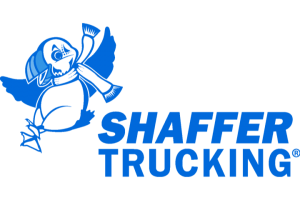Sliding Tandems
Welcome! This is your personal online trainer. I will strive to provide insightful and 100% accurate information regarding questions you have about the first few months in the life of a new driver--from driving tips to industry policies. Get in on the action.
Q:
I have been driving for two years. I never slid trailer tandems. I need to know how much weight is supposed to be on drive axles before I need to slide trailer tandems.
A:
Sliding tandems is necessary and required for three main things:
To adjust (move) some weight off of the tractor's axles rear to the trailer tandem axles.
To adjust weight OFF of the trailer axles and move some of the weight forward to the tractor axles.
To set the vehicles "bridge length" to a length that meets the bridge law (axle spacing) requirements of the state you are operating or will operate in.
The standard and allowable weight for regular five-axle truck and semi-trailer on the Interstate system is as follows: steer axles 12,000, drive axles 34,000 and the trailer tandems are 34,000. This would take the truck up to the standard acceptable weight of 80,000 pounds. There are a few states where it can be more weight and there are fewer still where there is less required on the axles. You really need to know where you are going and when and if you must travel smaller roads to get to your delivery point. As a rule, you should be scaling out or weighing all your loaded trailers to keep you from receiving one of those "whoops" tickets.
The weights I told you about are in a perfect world and the truck would be "grossed out" or 80,000 pounds. This would be extremely rare and I really don't think that being completely grossed out is really that easy to do. If you scale the truck and you're not overweight on the steer axles, and the weights are close to equal on the drive axles and the trailer tandems you are good to go. Ideally, it is safer to have more weight on the drive axles than the trailer tandems. If you scale out and the drive axle weights are lighter than the trailer tandems then you should slide the axles to the rear to get some weight to move forward to the drive axles.
You MUST first check the bridge length requirements to insure that you are not sliding the axles too far to the rear to meet the bridge law requirements! It is important to remember that you can have legal weights on all of your axles and still have a huge potential problem at the weigh stations. If you are legal on these axles and are found to be "over bridge," you are going to have to get the load moved to allow more weight to be moved forward so you can slide the trailer tandems up to meet the bridge length requirements. About the only way to do this is to physically get inside the trailer and move the freight forward! If the trailer is fully loaded and you are over-bridge and overweight, you will have to have some of the freight removed before being allowed to continue. This will likely cause you to get a major violation from your company, not to mention a pretty large fine from the DOT.
Sometimes you are just going to have a situation (especially when picking up pre-loaded trailers or drop and hooks) where there is just no way to get the tandems to weigh less than the drives. You CAN still legally take the load to where it needs to be, but you must REALLY be more careful with your lane changes and any other side-to-side maneuvers. If these weights are excessively different, you may have to refuse the load. Personally, if the axle weights are less than a thousand pounds difference, I'd just take it and run it. More weight on the drive axles is always preferable.
Written By: Fozzy

















